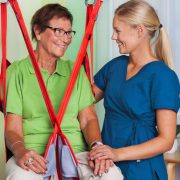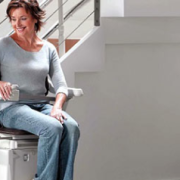ISCRR Review – Linking Worker Health and Safety with Patient Outcomes
A systematic review of the influence of healthcare worker musculoskeletal health ans safety interventions and work environment on patient outcomes. The review was prepared by Dr Katharine Gibson, Dr Beth Costa and Dr Amanda Sampson. Below is an extract from the review regarding musculoskeletal related health and safety for healthcare workers 5.1 Healthcare worker health...

A systematic review of the influence of healthcare worker musculoskeletal health ans safety interventions and work environment on patient outcomes. The review was prepared by Dr Katharine Gibson, Dr Beth Costa and Dr Amanda Sampson.
Below is an extract from the review regarding musculoskeletal related health and safety for healthcare workers
5.1 Healthcare worker health status and patient outcomes
Based on part A of this evidence review examining worker health status and patient outcomes, an evidence-based approach to improving both healthcare worker health and safety and patient outcomes would include:
- Implementation of health and safety interventions known to have a positive effect on patient outcomes. This may include managing worker fatigue through appropriate shift scheduling, promoting positive worker mental health through mental health enhancement strategies (eg. mindfulness and resilience), programs that reduce workplace bullying and harassment (eh. communication skills), workload management interventions.
- An integrated approach to addressing healthcare worker health and safety and patient health and safety that addresses shared determinants of worker and patient outcomes such as management of staff, communication, organisational culture, patient handling, work environment and equipment.
- Consideration of the organisation of work in healthcare for example employment structure factors such as shift work, long work hours, and workload.
- Consideration of the job characteristics for example physical and physiological demands on the worker like bullying and harassment, manual lifting and perceived safety climate.
- Providing leadership for and promoting a positive safety culture amongst staff, including a focus on both healthcare workers’ safety and patient safety.
Further evidence required:
- More rigorous studies in the form of randomised controlled trials, program evaluation and formal cost-benefit analyses is needed to determine effective strategies to assist healthcare organisations to implement integrated solutions to worker and patient health and safety.
5.2 Musculoskeletal health and safety interventions
In part B of this evidence review a range of existing musculoskeletal related health and safety interventions were identified and shown to significantly improve patient outcomes.
Specifically, the scientific evidence indicates that:
- The risk of health-facility acquired pressure injury can be reduced by up to 17% in nursing home and hospital settings with the use of patient positioning devices and policies and procedures around use of mechanical lifting devices.
- Mobility outcomes for patients in nursing home and rehabilitation settings can be improved by up to 12% through the implementation for safe patient handling programs and policies and procedures around use of mechanical lifting devices.
- Patient comfort and safety is improved by around 2 points on a comfort rating scale following the implementation of mechanical lifting devices, a suite of ergonomic lift assist devices and patient positioning devices in nursing home and hospital settings.
Evidence Review 190 / 22
- Medical errors may be reduced through the use of ergonomically designed operating room equipment.
- The implications of these findings for WorkSafe and healthcare organisations in reducing musculoskeletal disorders in healthcare workers and improving patient outcomes are outlined below:
- The research evidence from this review can be used to enhance organisational awareness and support for implementation of musculoskeletal related interventions for healthcare workers.
- Incentives to reduce health-facility acquired complications such as pressure injury can provide an impetus for interventions that address both worker and patient outcomes.
- The key patient outcomes impacted by musculoskeletal related interventions can be used as a minimum set of routinely collected metrics to monitor performance and evaluate the effect of local worksite interventions.
- Productivity indicators such as the reduced resources and time taken to transfer patients when musculoskeletal related health and safety interventions are in place maybe useful for linking business performance with the health and safety of healthcare workers.
The provision of staff education, policies and procedures and a culture of safety are critical for supporting the appropriate use of assistive devices and positive patient outcomes.
To reduce employee injuries, it is suggested to install ceiling hoists and rail systems for transferring patients.

Authored by Dr Katharine Gibson, Dr Beth Costa and Dr Amanda Sampson for ISCRR
Preferred Suppliers for the Healthcare Industry Since 2003
Patient Handling is founded on a sound base of great staff, great products and great partners. We strive to put our clients needs above all else and focus on well thought out solutions for complex needs.




Receive latest news
Contact Us
We are an online store only. Please contact us if you would like a product specialist to assist with your purchase.










